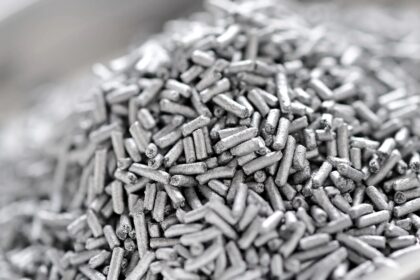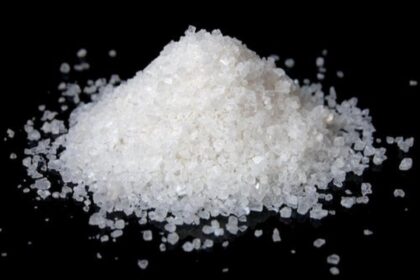Woven garments are essential in the fashion industry, especially for breathable and comfortable summer clothing. As global fashion trends continuously evolve, the demand for high-quality woven fabrics continues to rise. For apparel manufacturers and sourcing houses, mastering the fabric production process is not just beneficial—it’s critical to remaining competitive.
Producing woven fabric involves a series of carefully managed steps, each contributing to the strength, appearance, and functionality of the final textile. In this article, we’ll walk through the 10 key steps of the woven fabric manufacturing process, helping you better understand how to deliver premium woven fabrics on time and to specification.
What is Woven Fabric?
Woven fabric is a type of textile created by interlacing two sets of yarns—warp (longitudinal) and weft (crosswise)—at right angles using a loom. This creates a structured, strong material widely used in garments, upholstery, and industrial applications. Woven fabrics can vary significantly in texture, weight, and strength depending on the type of fiber and weaving method used.
The tradition of weaving dates back thousands of years. Ancient civilizations used primitive looms to create garments, ceremonial textiles, and trade goods. Today, with advanced technology and precision machinery, the process has become more efficient, offering endless possibilities in fabric design and quality.
10 Key Steps in Woven Fabric Manufacturing
1. Yarn Selection
The journey of woven fabric begins with selecting the right yarn. Yarn quality directly affects the texture, strength, and look of the final fabric. Depending on the desired product, manufacturers choose from various fiber types such as cotton, polyester, viscose, or blends.
Important factors during selection include:
- Yarn count (thickness)
- Twist per inch
- Moisture content
- Fiber type and blend ratio
Selecting the proper yarn ensures the final fabric performs well for its intended application.
2. Yarn Testing and Quality Inspection
Once the yarn is selected, it must undergo rigorous quality checks to avoid issues in later production stages. This involves:
- Tensile strength tests to ensure durability
- Evenness checks to identify slubs or thick-thin variations
- Color fastness if the yarn is dyed
- Moisture content control, especially for natural fibers
Identifying and eliminating subpar yarn early prevents waste and delays later in the process.
3. Yarn Winding
In this step, yarn is transferred from larger hanks or cones onto smaller, uniform bobbins or pirns. This process:
- Prepares yarn for efficient use in warping
- Detects and eliminates weak or knotted yarn
- Ensures consistent yarn tension for later stages
Proper winding helps maintain yarn quality and minimizes breakage during weaving.
4. Warping
Warping involves aligning multiple yarns in parallel and winding them onto a warp beam, which will later be used on the loom. Using a warping machine:
- Yarn cones are arranged on a creel
- Yarns are pulled with uniform tension
- The beam is wound evenly to avoid slack or over-tightness
This step sets the foundation for fabric structure and pattern accuracy.
5. Sizing
Warp yarns are prone to friction during weaving, which can lead to breakage. To reduce this risk, the yarns are coated with a sizing solution made from starch, resins, or synthetic polymers.
Key benefits of sizing include:
- Improved strength and elasticity
- Reduced hairiness
- Enhanced abrasion resistance
Once sized, the yarns are dried and wound onto the sizing beam, ready for drawing-in.
6. Drawing-in and Denting
This technical step involves threading each warp yarn through:
- A heddle (for raising and lowering threads during weaving)
- A reed dent (to control spacing and fabric width)
This is either done manually or with automated machines, depending on the fabric complexity and design repeat. Proper threading ensures smooth loom operation and consistent fabric texture.
7. Weaving
The weaving stage is where the actual fabric is formed. Modern looms (such as air-jet, rapier, or projectile looms) interlace warp and weft yarns based on a predetermined pattern.
Common weaves include:
- Plain weave – strong and simple
- Twill weave – diagonal pattern with softness
- Satin weave – smooth and lustrous surface
This step is the heart of the process and must be carefully monitored to prevent defects like broken ends or mispicks.
8. Grey Fabric Inspection
The raw woven output is called grey fabric. Before any finishing is done, it is inspected for:
- Holes or tears
- Yarn floats or missing picks
- Color shading (if colored yarn was used)
Defective areas are marked for repair or rejection, ensuring that only quality material proceeds to finishing.
9. Fabric Finishing
Finishing gives the fabric its final look, feel, and performance. Typical processes include:
- Scouring and bleaching – cleaning the fabric
- Dyeing or printing – adding color or patterns
- Heat setting – stabilizing the fabric dimensions
- Brushing or calendaring – enhancing softness or surface smoothness
These steps vary depending on the intended use and client specifications.
10. Final Quality Check and Packing
The final step involves:
- Inspecting finished fabric for color uniformity, strength, GSM, and defects
- Measuring fabric width and length
- Rolling and packing the fabric per order requirements
Each roll is labeled and stored for dispatch, ensuring traceability and delivery accuracy.
Moving Forward
Understanding the 10 key steps in woven fabric manufacturing allows apparel manufacturers and sourcing companies to streamline operations and meet the highest quality standards. For businesses operating in textile hubs like Bangladesh, mastering these stages ensures on-time delivery, satisfied clients, and long-term success.
By investing in quality at every step—from yarn to final inspection—you’ll produce fabrics that are not only durable and beautiful but also market-ready.




